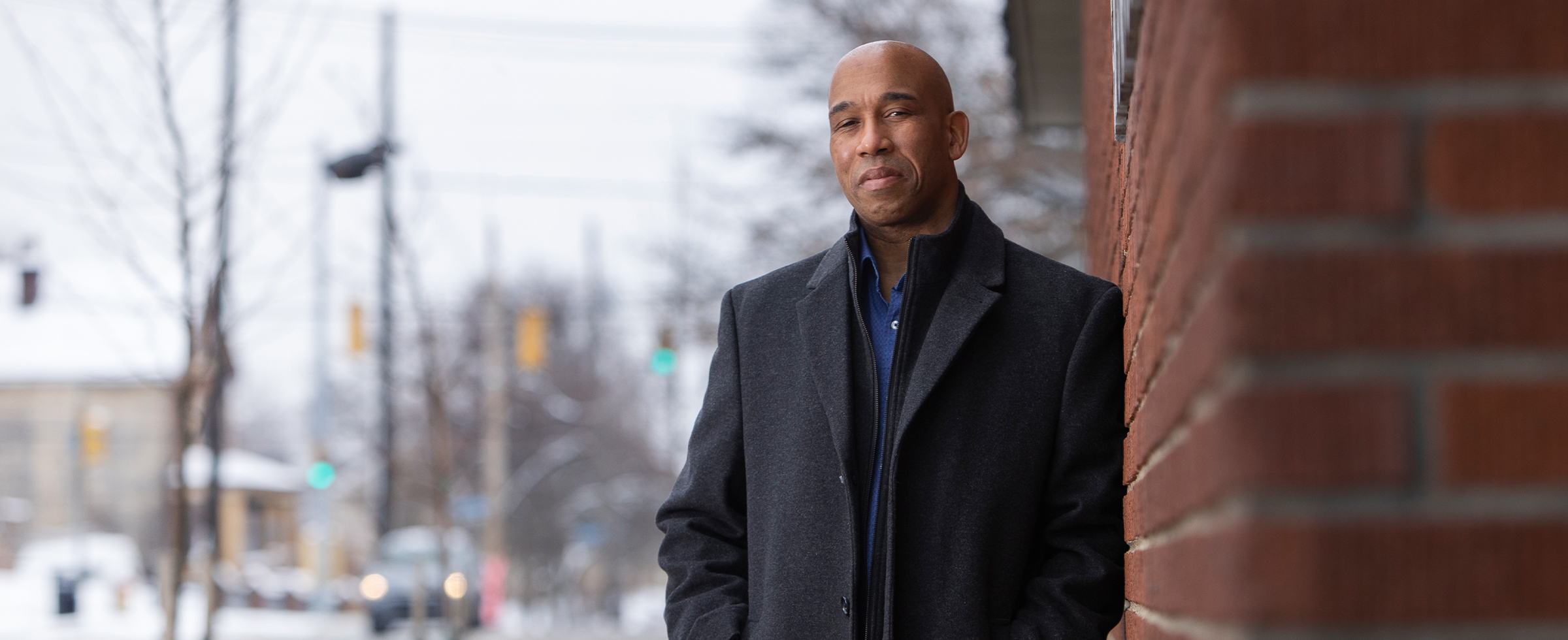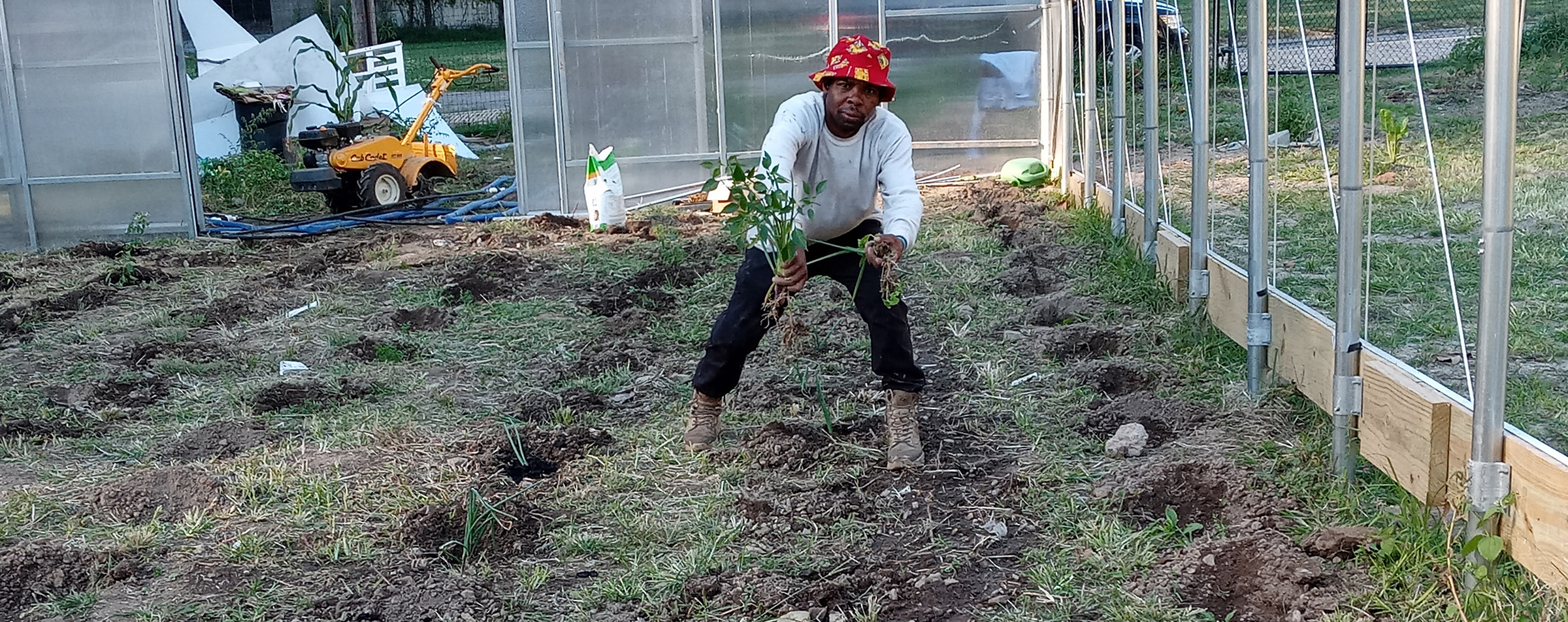Dr. Jerome Gloster: Resilience at the forefront of community-based health care

The “realistic optimist” Dr. Jerome Gloster, CEO of Primary Care Health Services, stands just outside the Homewood location. Image by Joshua Franzos.
If there is an expression that defines Dr. Jerome Gloster, colleagues and friends agree, it is “realistic optimist.” Dr. Gloster, chief executive officer of Primary Care Health Services Inc., immediately after his appointment in 2018 focused on expanding the patient population at the nonprofit that provides an array of medical services to minority communities across Allegheny County. He developed an ambitious plan to build out clinic spaces and create state-of-the-art centers at Primary Care’s nine facilities, including the Alma Illery Medical Center in Braddock. “The glass was more than half full,” he said. “We were expanding our services, including behavioral health, and offering medication-assisted treatment for opioid abuse. We were letting our patients know, ‘We value you.’” Then, the thunderbolt of 2020 — the coronavirus pandemic — struck.
LIKE EVERYONE ELSE, this is something we’ve never faced before. As an FQHC (Federally Qualified Health Center), we receive funding from public and private organizations. At the same time, we’re expected to generate revenue to cover at least half of our expenses. And, unlike private medical practices that can turn away people who don’t have insurance, or if Medicaid doesn’t cover the costs, we accept all patients — no matter their ability to pay. For that reason, in any given year, predicting patient flow and revenue is challenging. As we plunged into COVID-19, it’s been — wow! What do we do now to generate revenue just to keep our doors open for all the people who need us?
We were left to figure out new ways to ensure safety and good outcomes for our patients — all 14,000 patients. How do we do that, especially with my goal to reach 20,000 patients in the next few years? It hasn’t been easy. A lot of these concerns keep me up at night. Will we be able to continue to pay our staff? What happens if we lose staff? We had to limit the number of people coming into the offices because of COVID, and we had to keep those we thought to be infectious out of the offices. At the same time, for their health and safety, we needed to continue to care for them.
Thankfully, The Pittsburgh Foundation has been a godsend. The $100,000 from its Emergency Action Fund helped ensure that all nine of our clinics remained open despite the lower number of in-person patient visits. We also benefited from the federal PPP [Paycheck Protection Program] loans and other grants designed for COVID-related things.
Making it even tougher, however, was trying to get through to the patients who were told they shouldn’t go out, even if they were feeling sick. A lot of people in our Black and Brown communities let us know that the message circulating was that going to the hospital was a death sentence, that they should stay home, no matter what. So, even if their blood pressure was high or their diabetes got out of control, they stayed home. Our daunting challenge was to make a point of contact with all our chronic disease patients.
With the loosening of telehealth regulations, thanks to the emergency waivers, we have been able to provide more telehealth visits. And, thanks to the emergency waivers, we are being reimbursed for telephone visits with patients who don’t have internet access. We’ve been able to visit with more patients during this difficult time. I hope these waivers become a permanent part of how we conduct these vital telemedicine visits.
With all that, it has been paramount for me to continue to encourage my staff, all 130 of them, to stay strong. Most of them are part of our minority communities. They feel the tremendous stress to fulfill our mission and our calling to help all who live in their communities. They have families, too, and they’re wondering what’s going to happen to them if someone comes to the clinic coughing all over the place. So, we set aside time to talk with them. We’ve held Zoom calls at all of our sites just to allow them to tell us about their concerns, about their families — whatever they need to say. We surveyed our staff and found there was a lot of trepidation about the vaccine. So, our medical director, who is African American, prepared a scientific presentation addressing many of the myths and misconceptions. We started with 20% to 30% willing to get the vaccine. By the time we were ready to provide the vaccine to our staff, over 90% got it.
With our patients, as well, we take the time to talk with them, to hear them out. We’re facing challenge after challenge, but we’re learning and we’re getting better. We communicate regularly with our staff and with our patients. I’ve said this from the start: Let’s accept this as an opportunity to provide the best medical care all our patients deserve.
Original story appeared in the Forum Quarterly Spring 2021.




